What next for the future of Swansea city centre?
- Published
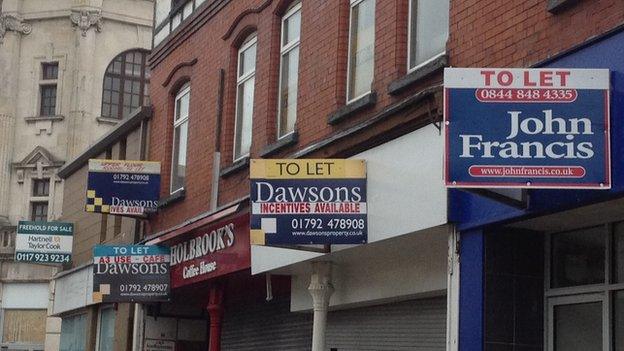
Empty shop units are a familiar sight in parts of Swansea city centre
Ten years after a flagship scheme to redevelop Swansea city centre collapsed questions are still being asked about what can be done to improve Wales' second city.
Castle Quays was planned to be the biggest rebuilding project in the city centre since the three-day blitz during World War Two and make it a leading shopping destination fit for the 21st Century.
But after several false starts, issues over buying land, the developer and an anchor tenant pulling out, the plans - first mooted in 1994 - were scrapped in 2004.
Since then the respective ruling councils have struggled to find an alternative option, with the most recent falling through last year when the firm behind a planned £1bn transformation pulled out.
Today, the state of the city centre today is evident.
Empty shop units, major retailers leaving, and a feeling that it has fallen further behind other cities in the UK.
Some have launched a defence on the state of the city saying it is a trend affecting many city centres and point the finger at out-of-town retail outlets along with online shopping and the global financial crisis.
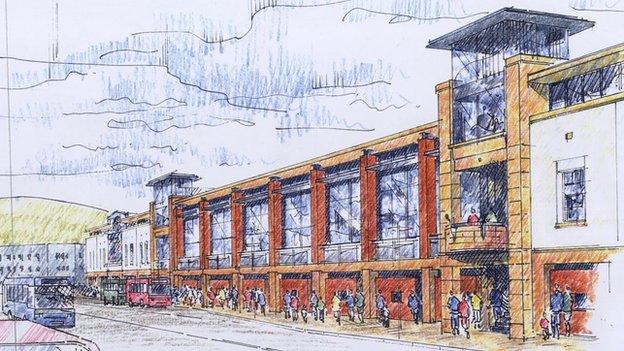
The failed Castle Quays development was 10 years in the planning

Castle Quays would have put a third of the city centre under cover but be closed off at night
But when you look at the likes of Cardiff, Birmingham, Bristol and Liverpool, those cities have gone through major transformations in recent years and are thriving.
"Castle Quays was a hugely missed opportunity," said Lawrence Bailey, who was leader of Swansea council when the scheme collapsed.
"The plan was to put a third of the city centre under cover in a similar shopping mall to St David's in Cardiff.
"But Swansea has got a real battle on its hands now."
Comparisons to Sydney
So much so, it seems, that the current ruling authority has drafted in experts to help take the city forward.
One of them is Prof Ken Maher, a leading Australian architect who has helped transform Sydney, which he said has also suffered from failed plans.
"Swansea has got great potential," said Prof Maher.
"It's had some challenges like many cities in the last few decades but it seems to me it has some great natural assets around the city, a close connection to the beach and it's got a city centre that needs revitalisation.
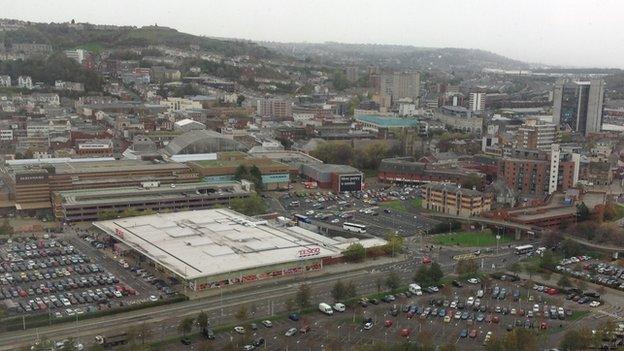
All aspects of the city centre are being looked at
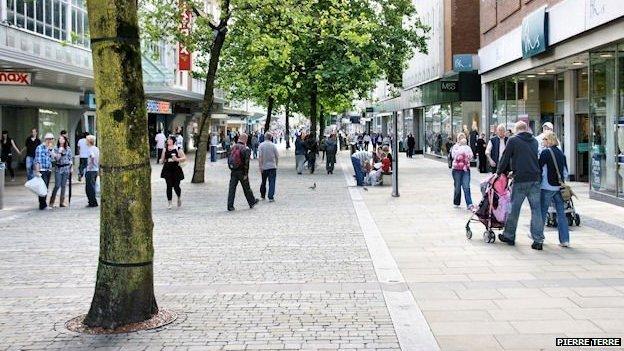
Swansea city centre has seen many businesses close over the last decade
"The two cities (Swansea and Sydney) have the same challenges but there are parallels in what they face.
"Bringing life and safety back into the centre of the city is one of the principal challenges.
"Following that is a shift on the quality of public spaces in the city and then public transport. These are all interlinked in a way."
'Punching below its weight'
Prof Maher said a key aspect of Sydney's current 20-year plan was to have year by year targets and for developments to be sustainable.
So what next?
The group of experts held their first meeting on the way forward for Swansea last month.
And Swansea council leader Rob Stewart is honest about the challenge that lies ahead for all who are involved.
"Swansea has fallen way behind other cities and is punching well below its weight at the moment," he said.


Union Street, which crosses Oxford Street is one of the main streets in the city centre

A temporary car park has been created on part of the old St David's shopping centre
"I don't want to replicate cities like Cardiff or Birmingham. We need to keep it different. The city centre is not as attractive as it should be.
"The amount of people living in the city centre is too low. We also don't have enough of the right quality, right size shops and office space in the city centre.
"When we build it has to be a much wider mix. The development should be an all day and all night development.
"I don't want to be the person that has created another plan. What's different this time is that we've got a city region in place and for that to be successful Swansea city has to be viable and successful."
Knocking down buildings to make way for new developments has already begun with part of the failed St David's shopping centre replaced with a temporary car park until a suitable replacement is found.
Those in charge know something needs to happen soon. What will 2015 bring?
- Published22 September 2014
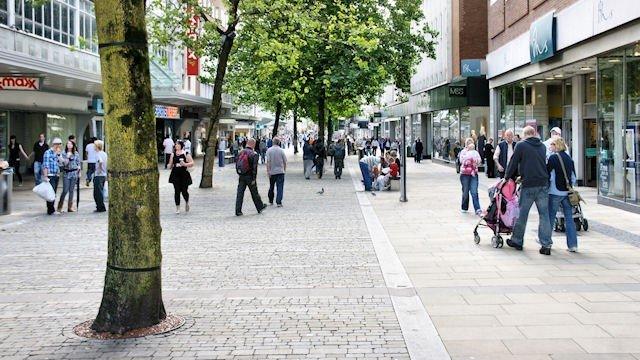
- Published5 October 2013
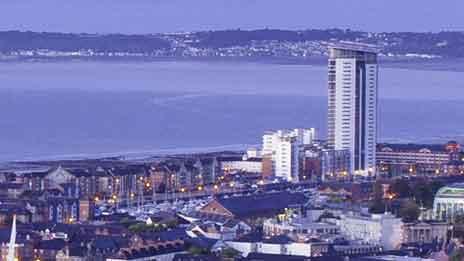
- Published3 October 2013

- Published26 June 2012
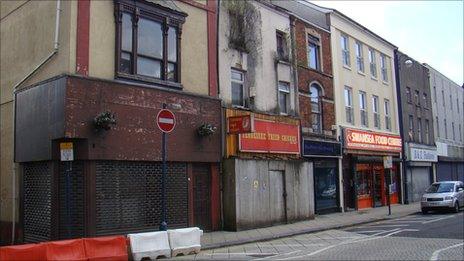
- Published17 June 2011
